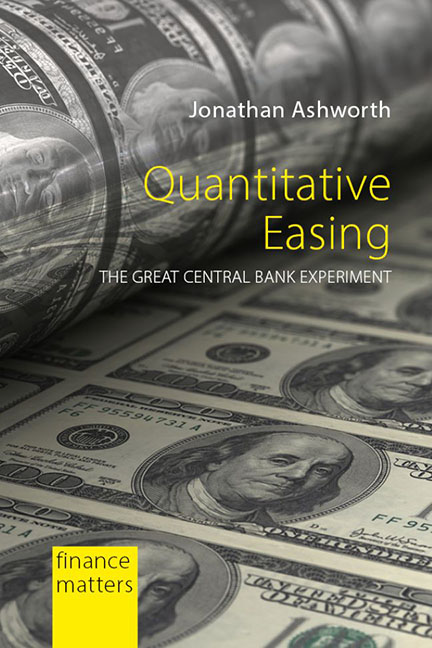Book contents
- Frontmatter
- Contents
- Preface and acknowledgements
- Abbreviations
- Foreword
- 1 Monetary policy-making since the end of Bretton Woods
- 2 Key monetary policy trends and events in the decades before the Great Financial Crisis
- 3 The Great Financial Crisis and the onset of quantitative easing
- 4 How quantitative easing works
- 5 Measuring the effectiveness and impact of quantitative easing
- 6 International spillovers of quantitative easing
- 7 Criticisms and negative externalities of quantitative easing
- 8 Exiting quantitative easing and policies for the next slowdown
- Conclusion
- Notes
- References
- Index
3 - The Great Financial Crisis and the onset of quantitative easing
Published online by Cambridge University Press: 20 December 2023
- Frontmatter
- Contents
- Preface and acknowledgements
- Abbreviations
- Foreword
- 1 Monetary policy-making since the end of Bretton Woods
- 2 Key monetary policy trends and events in the decades before the Great Financial Crisis
- 3 The Great Financial Crisis and the onset of quantitative easing
- 4 How quantitative easing works
- 5 Measuring the effectiveness and impact of quantitative easing
- 6 International spillovers of quantitative easing
- 7 Criticisms and negative externalities of quantitative easing
- 8 Exiting quantitative easing and policies for the next slowdown
- Conclusion
- Notes
- References
- Index
Summary
Continued interest rate increases by the Fed, which saw the target FFR reach 4.25 per cent by the end of 2005 and 5.25 per cent the following summer, helped cool the US housing market. As the cost of mortgage borrowing rose and the housing market slowed, particular pressure was felt by many sub-prime borrowers who had taken out adjustable-rate mortgages (ARMs) on low initial rates and were struggling to afford their payments once they had reverted to the higher prevailing interest rates (Bernanke 2007, 2013, 2015a). In states that experienced the largest booms such as California, Florida, Arizona and Nevada, house prices peaked in 2006 and then began to fall. Previously, when prices increased rapidly, this created significant equity for homeowners, allowing many sub-prime borrowers to remortgage their properties at more attractive interest rates or extract equity from their properties to help with rising mortgage payments. However, the slowdown and eventual decline in house prices meant that many had little or no equity in their properties (Bernanke 2013).
The national housing market began to weaken significantly in 2007 (see Figure 3.1) amid a surge in mortgage delinquencies and a sharp rise in the number of homeowners suffering negative equity (Bernanke 2013). This created a vicious cycle. Surging delinquencies and foreclosures significantly added to the supply of houses for sale, while at the same time demand weakened as mortgage lenders tightened their lending standards. The tightening became particularly severe in the sub-prime space as investors, suffering significant losses on their sub-prime mortgage assets, effectively withdrew from the market. The result was more rapid declines in house prices and volatility began to rise quite sharply in global financial markets as fears increased about potentially massive losses on the housing investments of US and European financial institutions.
The August announcement by the large French bank BNP Paribas that it was suspending customer withdrawals from some of its investment funds that invested in US sub-prime mortgages, because it could no longer value such assets, shocked global financial markets and is generally said to be when the global financial panic began in earnest (Irwin 2013).
- Type
- Chapter
- Information
- Quantitative EasingThe Great Central Bank Experiment, pp. 31 - 54Publisher: Agenda PublishingPrint publication year: 2020



